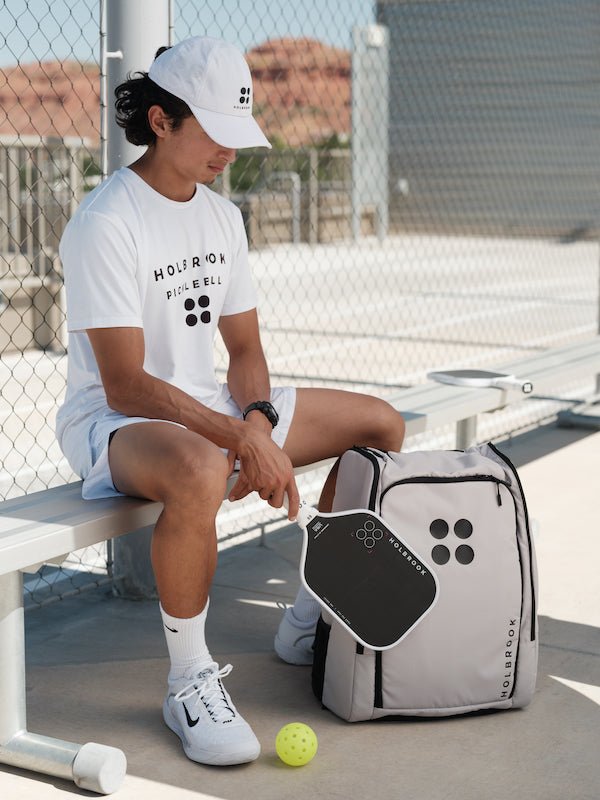Pickleball, the game that has taken the sporting world by storm, can be played in two player formats: singles and doubles. Each format offers a distinct experience, requiring different strategies, skills, and levels of stamina. In this blog post, we'll dive into how these differences can influence your approach to a doubles game.
Court Size and Boundaries
First and foremost, the court dimensions remain the same in both singles and doubles pickleball – 20 feet in width and 44 feet in length. However, the way players utilize this space varies significantly between the two formats. In doubles, the presence of a partner expands your team's coverage, allowing for strategic positioning and shot selection. The entire court width is used, which encourages a game focused on angles and teamwork. In contrast, singles play emphasizes speed and stamina, as each player must cover the entire court by themselves, leading to a game that often focuses more on depth and precision.
Serving and Scoring
Both singles and doubles follow the same basic rules for serving and scoring, but the dynamics of the game change with the number of players. In doubles, players serve diagonally across the court and alternate serves each time their team gains the serve back from the opponents. This rotation adds an extra layer of strategy, as players must be adept at both serving and receiving in various court positions. In singles, the serve still goes diagonally, but the player serves from the right side when their score is even and from the left when it's odd, focusing more on individual strategy and placement.
Strategy and Gameplay
The strategic depth of pickleball shines differently in singles and doubles play. Doubles pickleball is often characterized by longer rallies, with a significant emphasis on communication and teamwork. Players can set up and execute plays, utilizing the 'kitchen' or non-volley zone to force opponents into difficult positions. The game is more about precision and placing shots where opponents aren't, rather than outright power.
Mastering the Serve in Doubles Pickleball
Pickleball, a paddle sport that combines elements of badminton, tennis, and table tennis, has seen a surge in popularity in recent years. While it's a game that can be enjoyed by people of all ages and skill levels, understanding the nuances of its rules, especially when it comes to serving in doubles play, is crucial for those looking to elevate their game. This blog post aims to demystify the serving rules in doubles pickleball, ensuring players are well-equipped to hit the court with confidence.
The Basics of Serving in Doubles
In doubles pickleball, the serve is the initial shot that starts each point. The serve must be executed underhand, with the paddle contacting the ball below waist level. The server's feet must be behind the baseline, and the serve must be made diagonally across the court, landing in the opponent's service box.
The Two-Bounce Rule
One of the unique aspects of pickleball, including doubles play, is the two-bounce rule. After the serve, the ball must bounce once on the receiving side, and then once on the serving side, before players are allowed to volley the ball (hit it out of the air) on subsequent returns. This rule encourages longer rallies and strategic play.
Serving Sequence in Doubles
The serving sequence in doubles pickleball can be a bit complex for newcomers, but it's easy to grasp with a bit of practice. At the start of each new game, only one player from the serving team has the opportunity to serve before the serve passes to the opposing team. This is known as the initial serve. From then on, both members of the serving team will serve and alternate serving positions until they commit a fault (e.g., the serve goes out of bounds or into the net), at which point the serve shifts to the other team.
To keep track of the serve, pickleball uses a unique scoring system where the serving team's score is called first, followed by the receiving team's score, and then the server number (either "1" or "2"). For example, a score call of "4-3-2" means the serving team has 4 points, the receiving team has 3 points, and the second server on the team is serving.
Service Strategies for Doubles Play
Mastering the serve in doubles pickleball involves not just understanding the rules but also developing strategic approaches to serving. A well-placed serve can set the tone for the rally, putting the receiving team on the defensive. Some strategies include:
-
Power serves: Aim for the back of the service box to push your opponents back and limit their return options.
-
Soft serves: A softer serve can give you and your partner time to approach the net and establish a strong position for volleying.
-
Lob serves: Serving a short lob serve can change the pace of the game, creating opportunities for your team.
Before you search for a teammate for your next doubles match, partner up with Holbrook Pickleball for all your pickleball gear needs to help you play better
Stamina and Physical Demand
One of the most significant differences between doubles and singles pickleball is the physical demand placed on players. Singles pickleball is a high-intensity workout, requiring players to be in excellent physical condition to sprint, change directions, and reach for shots across the entire court. Doubles, while still physically demanding, allows for a bit more strategic play and less running for each player, as responsibilities are shared between partners.
Social Aspect
Finally, the social aspect of pickleball varies between the two formats. Doubles pickleball is inherently more social, as players have the opportunity to build chemistry with their partners and engage with two opponents, making it a favorite among those who enjoy the camaraderie of team sports.
Whether you prefer the teamwork and strategy of doubles or the physical challenge and individual competition of singles, pickleball offers something for everyone. Understanding the differences between these two formats can help players choose the style of play that best suits their abilities and preferences, enhancing their enjoyment of the game. As pickleball continues to grow in popularity, the diversity of play styles and strategies in both doubles and singles play ensures that the sport remains engaging and accessible to players of all ages and skill levels.
Ready to partner up on the courts? Team up with Holbrook Pickleball for pickleball gear and more.




